Previously: The Toynbee Tiles.
Just off the western coast of Scotland lies a chain of islands known as the Outer Hebrides. Just off the western coast of the Outer Hebrides lies another chain of islands called the Flannan Isles. And on the biggest of the Flannan Isles, Eilean Mor, lies a lighthouse. No one keeps the lighthouse anymore; it’s been fully automated since 1971. No one lives on the island, either. But for more than 70 years, it was staffed by living, breathing humans — usually teams of three, with an additional person on the shore, ready to rotate in every few weeks and relieve one of the other three. The system worked well… except for the one day early in its lifespan that it didn’t.
It worked well except for the day in 1900 on which the lighthouse keepers of Eilean Mor disappeared.
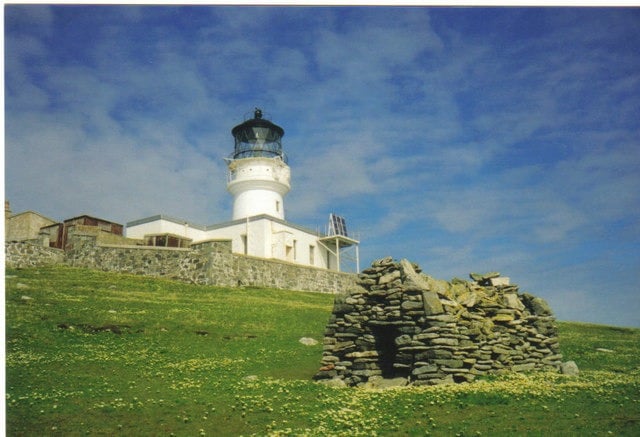
We still don’t know exactly where they are. And although we have some ideas, we still don’t know exactly what happened to them.
[Like what you read? Check out Dangerous Games To Play In The Dark, available from Chronicle Books now!]
The Flannan Isles Lighthouse began construction in 1895 from a design by David Alan Stevenson — a prolific lighthouse engineer responsible for 26 lighthouses located in and around Scotland over the course of his more than 50-year career — for the Northern Lighthouse Board. Completed in 1899, it sat on a steep, craggy cliff top, where it still remains today. Measuring 23 meters in height, it consists of a circular, three-stage tower, with a one-story keeper’s house at the northeast corner. Outside, a corbelled walkway and steel railings form the second stage, while a cast iron deck above forms the third. Inside, a serpentine cast-iron staircase circles its way up. The keeper’s house is L-shaped, with a flat roof. The lighthouse’s lamp — the most important part of the structure, it’s raison d’etre — is protected by a domed cap and topped with a weathervane.
It looks, in short, just how you’d think a lighthouse is supposed to look. It’s the platonic lighthouse ideal, so to speak.
At the time it began operation in 1899, however, its picturesque appearance did little to counteract the questionable reputation Eilean Mor had already long had. First, there was the weather: Notoriously bad, the treachery of the seas surrounding the island were what had necessitated the lighthouse’s construction in the first place. But it was also widely believed that there was something… unnatural about the island. The ruins of the Chapel of St. Flannan, for example, had sat there for centuries; rumor had it that the monk who had built it — the titular St. Flannan — and his followers abandoned the chapel shortly after its due to unending torment they suffered at the hands of “magical beings” that called the island their home.
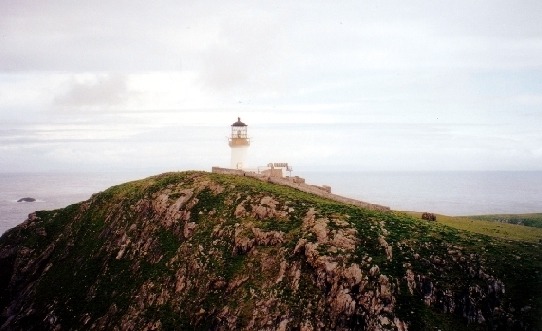
Superstition was strong among the locals. Stories of mischievous, diminutive creatures called Lusbirdan were regularly told; if you weren’t careful, you’d get roped into performing strange rituals for them. Folks from the Outer Hebrides were willing to sail to Eilean Mor if the wind was easterly, but should it turn westerly, they would immediately turn back. Shepherds kept sheep on the island, but avoided spending the night on it. They called it “the other country.”
Eilean Mor wasn’t a place you wanted to be during the best of times — but you definitely didn’t want to be there after the sun went down. The keepers of the lighthouse therefore had an unenviable job: To remain stuck in an isolated location, day in, day out, for weeks on end, with no one around for company except each other — and possibly the otherworldly beings of the island itself.
In late December of 1900, James Ducat, Thomas Marshall, and Donald McArthur were the unlucky trio tasked with operating the lighthouse. Ducat, age 43, held the title of Principal Keeper; Marshall, 28, was the Second Assistant; and McArthur, 40 and termed the “Occasional Keeper,” functioned as the First Assistant, substituting in for regular First Assistant, William Ross, while Ross was away on extended sick leave. The fourth keeper, Joseph Moore, had left for his fortnight of mandated shore leave earlier in the month; by Dec. 26, though, he had hopped aboard the good ship Hesperus, captained by Jim Harvie and bound for Eilean Mor. The Hesperus stopped at the island every two weeks in order to bring supplies and returning the relief keeper to the lighthouse. Moore’s period of leave had ended, and it was time for him to relieve one of his fellow keepers.
But as the ship approached the island, those aboard it began to worry. The lighthouse was dark. No flag flew from it. A blast first from the ship’s steam whistle, then from a rocket fired from the deck both elicited no response. And although they didn’t know it at the time, no one had heard from the keepers in more than a week.
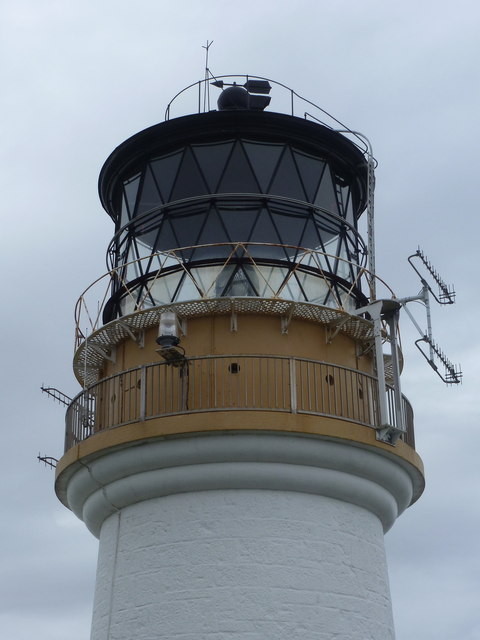
What Moore, Harvie, and the rest of the Hesperus’ crew found when they made landfall rocketed their sense of worry to a state of emergency. Moore set foot on the island first, setting out immediately for the lighthouse to investigate while the ship’s second mate, a man called McCormack, and a handful of other crew members kept watch over the small boat they had used to reach the shore. When he reached the lighthouse, he both found the entrance gate and the door closed. In the kitchen, the fireplace cold; Moore surmised that it hadn’t been lit “for some days,” according to a report he wrote on Dec. 28, 1900 detailing the state of the lighthouse as he found it. The beds in the living quarters were empty, as well.
Ducat, Marshall, and McArthur were nowhere to be seen.
Moore had seen enough to know, as he put it in his report, “only too well… [that] something serious had occurred.” He ran back to the boat and told McCormack what he had seen; however, when McCormack and the remaining crew members who had come ashore went back to the lighthouse with Moore to investigate more fully, they, too, encountered a seemingly deserted lighthouse. The light itself was in “proper order,” its lamp cleaned, its fountain full, the blinds on the windows down, and so on and so forth — but nary a soul was to be found.
In the following days, further investigation, not just of the lighthouse, but of Eilean Mor as a whole, revealed a few more details: On the landing platform on the east side of the island, for example, everything was shipshape and where it was meant to be; however, a box containing mooring ropes and tackle the keepers kept in a crevice in the rock on the concrete tramway leading to the west landing platform was missing, with several of its ropes lying on the rocks below. The iron railings had also broken away from the founding in several places. And, oddest of all, every single clock in the lighthouse had stopped. But even these details failed to explain exactly what happened to the lighthouse keepers of Eilean Mor.
Telegrams were sent. Plans were set into motion. More investigations began.
Superintendent Robert Muirhead and several others arrived on Eilean Mor to see what more the island and its abandoned lighthouse might be able to tell them. Muirhead’s report of this trip, dated Jan. 8, 1901, reaffirms Moore’s report while also providing a few more details. On the tramway leading to the west platform, for example, a “large block of stone, weighing upwards of 20 cwt, had been dislodged from its position higher up and carried down to and left on the concrete path.” A life buoy typically attached to the railings here had also vanished, appearing to have been torn off its ropes. Both Moore and Muirhead also both noted that Ducat and Marshall had apparently been wearing the boots and waterproof gear they donned only when heading to the landing platforms, as evinced by the fact that these items weren’t anywhere to be found within the lighthouse itself. Oddly, though, the coat McArthur typically wore when performing this kind of outdoor work was still hung up inside.
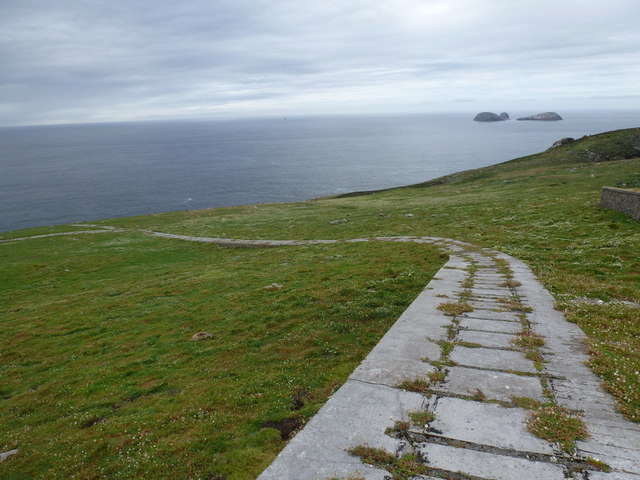
A timeline also finally began to emerge. According to Muirhead’s report, the last entry on the lighthouse’s logbook was made the morning of Dec. 15 and indicates that the upkeep tasks on the lamp and lightroom intended to be performed that day were completed. Additionally, whoever was acting as cook on that day had completed their work, as well — the pots, pans, and kitchen were all clean and tidy. And, crucially, another fact came out around this time: A steamer — the Archtor — had passed by Eilean Mor around midnight the night of Dec. 15 into Dec. 16 and found the lighthouse to be dark. Feeling the incident to be of concern — no lighthouse keeper would allow the lamp to go dark in the kind of weather they were sailing in at the time — the Archtor had reported it to the Northern Lighthouse Board; however, the report had gotten lost, a victim of bureaucracy, and rediscovered only after the Hesperus’ Dec. 26 voyage to the island a full 10 days later.If we take the logbook and the Archtor’s report together, it seems likely that whatever fate befell the keepers, it happened on Dec. 15 — after the morning, but before midnight.
It’s hard not to wonder how the whole case might have played out if the Board had taken action immediately. It still may not have been possible to save the keepers — but perhaps more conclusive evidence might have been found before it was swept out to sea.
Perhaps we’d have a bit more closure.
Muirhead did eventually arrive at an explanation for what had befallen the missing keepers — and he’s probably not wrong. It’s the Occam’s razor of the situation:
“After a careful examination of the place, the railings, ropes etc. and weighing all the evidence which I could secure, I am of opinion that the most likely explanation of the disappearance of the men is that they had all gone down on the afternoon of Saturday, 15 December to the proximity of the West landing, to secure the box with the mooring ropes, etc. and that an unexpectedly large roller had come up on the Island, and a large body of water going up higher than where they were and coming down upon them had swept them away with resistless force.
I have considered and discussed the possibility of the men being blown away by the wind, but, as the wind was westerly, I am of the opinion, notwithstanding its great force, that the more probably explanation is that they have been washed away as, had the wind caught them, it would, from its direction, have blown then up the Island and I feel certain that they would have managed to throw themselves down before they had reached the summit or brow of the Island.”
Today, it’s generally believed that Ducat and Marshall put on their wet weather gear when the storm hit and went to the west landing platform to secure the ropes and tackle. McArthur — who left his coat behind — may have either rushed to respond to calls for help from Ducat or Marshall or simply run outside to help of his own accord when he realized how bad the weather was. And all three of them were subsequently swept away.

But there are still… stories. Other stories. Other explanations. Other… suggestions. They’re passed around from time to time by those who don’t buy the “swept out to sea” idea:
Maybe the three keepers simply decided to leave the lonely, cold, inhospitable island, boarded a passing ship, and left to start new lives elsewhere, living out the rest of their days far beyond the reach of all who had previously known them.
Or perhaps the keepers, cooped up together for what must have felt like an eternity with no other company but their own, turned on each other. The isolation getting the best of them, they fought on the clifftop, or perhaps atop the lighthouse itself, and fell — or threw each other — to their deaths.
Maybe they were taken — by spies, by the government, by a sea creature, by giant, black birds.
Or maybe they were simply “spirited into the otherworld,” stolen away by the ancient, mystical beings thought to inhabit the island.
Of these alternate theories, the first two are (unsurprisingly) considered to be the most likely. However, the “evidence” that’s often pointed to in support of these theories… doesn’t always pan out. Indeed, many of the frequently cited “details” about the circumstances in which Joseph Moore, Jim Harvie, and Robert Muirhead allegedly found the lighthouse when they first investigated at the end of 1900 and the beginning of 1901 aren’t actually mentioned in any of the reports they wrote afterwards.
It’s often said, for example, that Moore found a half-eaten meal on the kitchen table; however, this detail is nowhere in Moore’s own report. Indeed, Muirhead’s report stated explicitly that the kitchen was clean and tidy. Nor did Moore find a single chair knocked over in the kitchen; according to Brian Dunning of Skeptoid, this detail comes from an epic poem written by W. W. Gibson and published in 1912 dramatizing (and fictionalizing) the event. The same goes for the belief that three huge, black birds flew out from the top of the lighthouse the moment Moore approached.
Perhaps most bizarrely, the final entries in the lighthouse’s logbook are frequently heavily embellished. Said to have been written by Thomas Marshall, these entries are often reported as reading:
“Dec. 12: Gale, north by north-west. Sea lashed to fury. Stormbound 9pm. Never seen such a storm. Everything shipshape. Ducat irritable. 12pm. Storm still raging. Wind steady. Stormbound. Cannot go out. Ship passed sounding foghorn. Could see lights of cabins. Ducat quiet. McArthur crying.
Dec. 13: Storm continued through night. Wind shifted west by north. Ducat quiet. McArthur praying. 12 noon. Grey daylight. Me, Ducat, and McArthur prayed.
Dec. 15: 1pm. Storm ended. Sea calm. God is over all.”
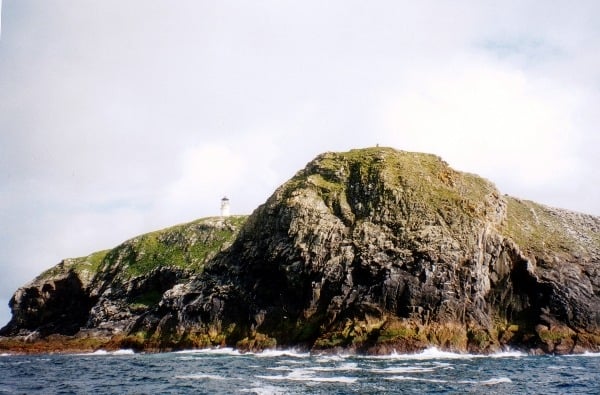
It’s these logbook entries that many believe support the idea of the keepers turning on each other and fighting to the death; however, they’re all fabricated. As Mike Dash notes in his exceedingly thorough investigation of the case, the logbook was actually only kept up to Dec. 13; according to the Northern Lighthouse Board’s own records and news reports from the time, the entries between Dec. 13 and Dec. 15 were written in chalk on a slate, with the intention being to transfer them into the actual book later. (The keepers disappeared before anyone had a chance to transfer the entries.) Also, Muirhead’s report tells us exactly what was in the final entry for Dec. 15 — which, by the way, was written by James Ducat, not Thomas Marshall — and when it happened: It’s timestamped 9am and notes only that “the lamp was crimmed, the oil foundations and canteens were filled up and the lens and machinery cleaned.” No mention was made of any of the keepers being “irritable,” “crying,” or “praying.” As Muirhead observed, this entry simply “proves that the work of the 15th had been completed” — no more, no less.
Oh, and Mike Dash also tracked down the person responsible for writing these logbook entries in a separate piece: They’re the creation of John L. Spivak writing under the pseudonym Ernest Fallon. Spivak included them in a short story he published in the magazine True Strange Stories — which often featured stories that were not true — in 1929.
They’re 100 percent fictional.
But although we can separate fact from fiction fairly easily — and although we can disprove many of the alternative explanations — and although we have a pretty solid idea about what might actually have happened at the Flannan Lighthouse on Eilean Mor in December of 1900… the bottom line is, we still don’t really know. And we probably never will.
The remains of James Ducat, Thomas Marshall, and Donald McArthur were never recovered.
Maybe they’re still there somewhere, deep beneath the waves, where no light can reach.
Maybe they’re still trapped in the darkness of Eilean Mor.
Maybe they never left.
***
Follow The Ghost In My Machine on Twitter @GhostMachine13 and on Facebook @TheGhostInMyMachine. And don’t forget to check out Dangerous Games To Play In The Dark, available now from Chronicle Books!
[Photos via JJM, Marc Calhoun (1, 2), Chris Downer (1, 2)/Wikimedia Commons, available under a CC BY-SA 2.0 Creative Commons license.]
Leave a Reply